The geopolitical triangle of Russia, China, and the United States defines the modern global order. As China rises, Russia reasserts its influence, and the US faces mounting challenges, their interactions shape economic, military, and diplomatic landscapes. China and Russia’s growing partnership seeks to undermine US dominance, while Washington struggles to counter their combined influence. This article explores the strategies, alliances, and challenges shaping the balance of power between these three global players.
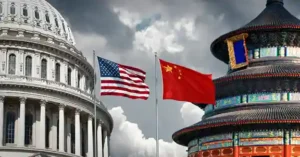
Introduction to Russia And China Vs Us Relations
The relationship between Russia, China, and the United States is a critical axis of global geopolitics. These three powers, with their unique strengths and ambitions, influence the world’s economic, political, and security dynamics. Each has a distinct vision for shaping the future, which often brings them into competition and, at times, reluctant cooperation.
Historical Context
The origins of this triangular relationship can be traced back to the Cold War. The US and the Soviet Union were superpowers locked in ideological and military rivalry. China, though communist, positioned itself as a third power, occasionally aligning with one side to counterbalance the other. The collapse of the Soviet Union in 1991 reshaped this dynamic, leaving the US as the sole superpower. However, in the decades that followed, China’s meteoric economic rise and Russia’s resurgence under Vladimir Putin gradually eroded the unipolar world order.
The Current Geopolitical Climate
Today, the US faces simultaneous challenges from both Russia and China. Beijing’s economic and technological advancements, coupled with its assertive foreign policy, have positioned it as Washington’s primary competitor. Meanwhile, Moscow’s efforts to reestablish itself as a global power, particularly through military interventions and energy diplomacy, add another layer of complexity.
China and Russia have found common ground in their opposition to US-led international systems. Their collaboration seeks to challenge Western influence in global institutions, promote alternative models of governance, and expand their spheres of influence. For the US, this partnership represents a significant strategic dilemma, requiring a nuanced approach to address two powerful adversaries simultaneously.
Why This Triangular Relationship Matters
The interplay between these three nations affects every major global issue, from trade and technology to security and climate change. Understanding the motivations and strategies of each player is essential for navigating the challenges they present and shaping the future of international relations.
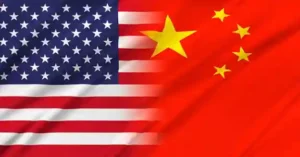
China’s Strategic Objectives
China’s global rise is not accidental but a result of deliberate, long-term strategic planning. Guided by a vision to restore its historical position as a dominant world power, China’s actions are driven by political, economic, and military objectives designed to expand its influence and counter perceived threats, particularly from the United States.
Expanding Global Influence
China’s Belt and Road Initiative (BRI) is a cornerstone of its strategy to reshape global trade and infrastructure. Launched in 2013, the BRI aims to connect Asia, Africa, and Europe through a network of trade routes, ports, and industrial projects. By financing and developing critical infrastructure in over 100 countries, China not only fosters economic dependency but also extends its geopolitical reach.
Additionally, Beijing actively promotes its vision of global governance, advocating for reforms in international institutions like the United Nations, World Trade Organization, and International Monetary Fund. These efforts are aimed at increasing China’s representation and diminishing the dominance of Western powers in setting global norms.
Strengthening Regional Dominance
China views Asia as its primary sphere of influence and seeks to establish itself as the preeminent power in the region. Through initiatives like the Regional Comprehensive Economic Partnership (RCEP) and its assertive actions in the South China Sea, Beijing aims to strengthen economic ties with neighboring countries while projecting military power. Its strategy is twofold: to deter US presence in the region and to marginalize rival powers like Japan and India.
Military Modernization
China has invested heavily in modernizing its military, transforming the People’s Liberation Army (PLA) into a technologically advanced force capable of competing with the US. Key areas of focus include:
- Naval Expansion: Building a blue-water navy to protect sea lanes and assert control over disputed territories.
- Space and Cyber Capabilities: Developing satellite systems, hypersonic weapons, and cyber warfare tools to enhance strategic dominance.
- Integrated Command: Enhancing joint operations between the PLA’s land, air, naval, and missile forces to improve efficiency and combat readiness.
These efforts aim to challenge US military superiority in critical regions, particularly the Indo-Pacific.
Economic and Technological Leadership
China’s economic strategy is rooted in self-reliance and global competitiveness. It prioritizes:
- Technological Advancement: Through initiatives like “Made in China 2025,” Beijing seeks to dominate industries such as artificial intelligence, robotics, and green energy.
- Trade and Investment: Leveraging its economic power to secure trade deals, invest in resource-rich regions, and extend influence over global supply chains.
- Currency Internationalization: Promoting the yuan as a global currency to reduce dependency on the US dollar and mitigate the impact of US sanctions.
Countering US Influence
China’s strategic objectives also revolve around countering US efforts to contain its rise. Beijing has:
- Strengthened alliances with Russia and other non-Western powers.
- Promoted alternative international forums like the Shanghai Cooperation Organization (SCO) and BRICS.
- Actively opposed US-led initiatives, from trade wars to military alliances like AUKUS and the Quad.
China’s View of the China-Russia Relationship
From Beijing’s perspective, its partnership with Moscow is instrumental in counterbalancing US power. While the two nations have differences, their shared opposition to the US-led global order has driven them closer. China views Russia as a valuable partner in military cooperation, energy supplies, and diplomatic support on issues like Taiwan and global governance.
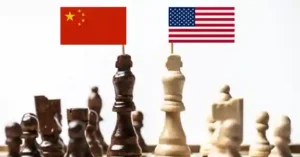
Russia’s Strategic Perspective
Russia’s approach to global power dynamics is shaped by its historical identity, geopolitical ambitions, and economic realities. As a nation with a legacy of superpower status, Russia seeks to reassert its influence on the world stage while countering Western encroachment. Its relationship with China is both a strategic necessity and a calculated alliance aimed at balancing against the United States.
Restoring Great Power Status
Russia’s foreign policy under Vladimir Putin is centered on restoring its position as a great power. Following the collapse of the Soviet Union, Russia experienced a period of decline in global influence. Putin’s leadership has focused on reversing this trajectory by:
- Expanding military capabilities and modernizing its armed forces.
- Leveraging energy resources as a geopolitical tool.
- Engaging in assertive actions, such as the annexation of Crimea, intervention in Syria, and influence operations in Europe and the US.
For Russia, reestablishing its dominance in the post-Soviet space remains a priority. This includes maintaining control over neighboring states and countering NATO’s eastward expansion.
Economic Realities and Dependencies
Russia’s economy is heavily reliant on energy exports, particularly oil and gas. This dependence on commodity markets limits its ability to compete with economic powerhouses like China and the US. However, Russia has strategically leveraged its energy resources to strengthen ties with China and Europe while using energy diplomacy to gain leverage in geopolitical negotiations.
The Western sanctions imposed after Russia’s actions in Ukraine further isolated its economy, pushing Moscow closer to Beijing for trade, investment, and technological support. Despite this growing reliance, Russia is cautious about becoming overly dependent on China, striving to maintain its economic sovereignty.
Military Strategy and Global Influence
Russia’s military strategy focuses on asymmetric capabilities to challenge the West. Key elements include:
- Nuclear Deterrence: Maintaining one of the world’s largest nuclear arsenals to ensure strategic balance with NATO and the US.
- Hybrid Warfare: Employing cyberattacks, disinformation campaigns, and covert operations to achieve geopolitical goals without direct military confrontation.
- Global Military Presence: Expanding influence in regions like the Middle East, Africa, and Latin America through arms sales, military alliances, and interventions.
Russia views China as a partner in countering US military dominance. Joint military exercises and intelligence sharing have strengthened their strategic alignment.
Russia’s View of the China-Russia Relationship
From Moscow’s perspective, the partnership with Beijing is a pragmatic alignment of interests. Russia recognizes China’s growing economic and technological power as a counterbalance to Western influence. Key aspects of this relationship include:
- Mutual Opposition to the US: Both nations oppose US-led alliances and policies that threaten their sovereignty and regional ambitions.
- Economic Collaboration: Russia supplies China with critical energy resources, while Beijing provides investment and technological assistance.
- Strategic Autonomy: Russia is cautious about becoming a junior partner in the relationship, seeking to maintain equal footing despite China’s economic dominance.
While the alliance has grown stronger in recent years, Russia remains mindful of historical tensions and potential competition with China, particularly in Central Asia, where both nations have strategic interests.
Balancing Act in the Global Arena
Russia’s strategic perspective involves balancing its relationship with China and its interactions with the West. While the partnership with Beijing is vital for countering US influence, Moscow remains open to opportunities for engagement with Europe and other global powers to diversify its options and reduce overreliance on any single partner.

China-Russia Collaboration: An Overview
China and Russia have forged a partnership that, while not a formal alliance, represents a powerful collaboration to challenge the US-led global order. This partnership is rooted in shared strategic interests, complementary strengths, and mutual opposition to Western influence. Their cooperation spans multiple dimensions, including military, economic, and diplomatic domains, underscoring their commitment to reshaping global power dynamics.
Mutual Strategic Interests
At the core of the China-Russia partnership is their shared objective of undermining Western dominance. Both nations perceive the US as a threat to their sovereignty and ambitions. This alignment drives their cooperation in areas such as:
- Countering NATO: Russia opposes NATO’s expansion in Europe, while China views US alliances in the Indo-Pacific, like AUKUS and the Quad, as direct threats.
- Promoting Multipolarity: Both advocate for a multipolar world order where no single nation dominates, emphasizing their roles as global powers.
- Opposing Western Interventions: Their collaboration often involves resisting US-led initiatives in regions like the Middle East and Africa, where they aim to expand their influence.
Key Areas of Collaboration
Military Cooperation
Joint military exercises showcase their growing security partnership. Exercises such as “Vostok” and naval drills in the Pacific and Arctic signal their readiness to cooperate in contested regions. Intelligence sharing and arms trade strengthen their military ties, with Russia supplying advanced weaponry and China providing financial support for joint projects. Both nations aim to modernize their militaries and develop technologies to counter US superiority, including hypersonic weapons, missile defense systems, and cyber capabilities.
Economic Collaboration
China is Russia’s largest trading partner, and their economic relationship has deepened significantly, especially after Western sanctions on Russia. Russia supplies China with critical resources such as oil, gas, and minerals, while China invests in Russian infrastructure and technology. The two nations have also sought to reduce dependence on the US dollar by conducting trade in their own currencies, challenging the dominance of the global financial system.
Diplomatic Alignment
At the United Nations, China and Russia frequently align their positions to block Western-led resolutions, particularly on issues like human rights, sovereignty, and interventionist policies. They work together in alternative global forums such as BRICS (Brazil, Russia, India, China, South Africa) and the Shanghai Cooperation Organization (SCO), promoting their vision of global governance. Both nations have criticized US policies, from sanctions to military interventions, fostering a narrative of Western decline and overreach.
Technological and Strategic Cooperation
Russia and China collaborate in areas like space exploration, artificial intelligence, and telecommunications. For instance, Russia has turned to Chinese technology companies for support in areas affected by Western sanctions. Joint projects in critical technologies aim to reduce their reliance on Western innovations and build indigenous capabilities.
Challenges and Limitations
While their partnership is strong, it is not without challenges:
- Economic Imbalance: China’s economy dwarfs Russia’s, raising concerns in Moscow about becoming a junior partner in the relationship.
- Historical Tensions: The two nations share a history of rivalry, particularly in Central Asia, where their interests sometimes clash.
- Differing Long-Term Goals: While both oppose the US, their visions for global leadership differ, with China focusing on economic dominance and Russia prioritizing security and influence in its immediate neighborhood.

Military Collaboration
Military collaboration between China and Russia has become a cornerstone of their strategic partnership. While not a formal military alliance, their growing defense cooperation reflects shared objectives to counterbalance US influence and challenge Western military superiority. This partnership has expanded significantly over the past decade, encompassing joint exercises, technological exchange, and strategic coordination.
Joint Military Exercises
China and Russia regularly conduct joint military exercises to enhance their interoperability and project power globally. These exercises serve multiple purposes:
- Demonstrating Strength: Showcasing their military capabilities to deter adversaries, particularly the US and its allies.
- Strengthening Ties: Building trust and cohesion between their armed forces.
- Expanding Reach: Conducting exercises in regions like the Pacific, Arctic, and Indian Oceans highlights their global ambitions.
Key examples include
- Vostok Exercises: Russia invited Chinese troops to participate in its large-scale Vostok drills, signaling deeper military integration.
- Naval Drills: Joint naval exercises in the South China Sea, East China Sea, and Mediterranean demonstrate their ability to operate in contested waters.
- Aviation Patrols: Coordinated air patrols over international waters, such as the Sea of Japan and East China Sea, challenge US and allied surveillance and reinforce their strategic alignment.
Arms Trade and Technology Exchange
Russia has long been a key supplier of advanced weaponry to China. This trade has strengthened China’s military capabilities while providing Russia with a vital economic lifeline. Notable aspects include:
- Weapons Systems: China has purchased Russian aircraft, air defense systems (like the S-400), and naval equipment.
- Technology Transfer: Russian expertise has contributed to China’s development of indigenous technologies, such as stealth fighters and missile systems.
- Joint Development: Collaborative projects, such as developing hypersonic weapons and space technologies, reflect their shared goals to outpace Western advancements.
Strategic Coordination
China and Russia coordinate strategically to challenge US military dominance. Key aspects include:
- Regional Focus: Both nations work to deter US presence in areas critical to their interests—China in the Indo-Pacific and Russia in Eastern Europe and the Arctic.
- Nuclear Deterrence: Both maintain robust nuclear arsenals and support each other’s deterrence strategies. For instance, Russia supports China’s efforts to modernize its nuclear forces while coordinating on arms control initiatives that exclude the US.
- Cyber and Space Collaboration: They collaborate on cyber defense and space exploration, enhancing their capabilities in these emerging domains.
Challenges and Divergences
Despite growing military ties, challenges remain:
- Asymmetry in Capabilities: Russia’s military remains highly capable but constrained by economic limitations, whereas China’s defense budget is rapidly growing.
- Geopolitical Ambitions: While their partnership is strong, their long-term objectives differ. China seeks to dominate the Indo-Pacific, while Russia focuses on asserting influence in Europe and the Arctic.
- Central Asia Rivalry: Both nations have interests in Central Asia, a region where their military and strategic goals sometimes diverge.
Implications for Global Security
China-Russia military collaboration has significant implications for global security and stability:
- Challenges to the US and NATO: Their combined capabilities stretch Western defense strategies, forcing the US and its allies to address threats on multiple fronts.
- Shifting Power Dynamics: Their partnership signals a move toward a multipolar world, where traditional Western dominance is increasingly contested.
- Increased Militarization: Joint activities contribute to the global arms race, particularly in areas like hypersonic weapons and space militarization.

Economic Collaboration
Economic collaboration between China and Russia forms a crucial pillar of their strategic partnership, driven by mutual needs and shared goals to reduce dependence on Western-led economic systems. While China’s economic dominance contrasts with Russia’s resource-based economy, their complementary strengths have allowed them to build a robust economic relationship that challenges US-led global economic norms.
Trade Relations
China is Russia’s largest trading partner, and their bilateral trade has grown significantly in recent years. Key aspects include:
- Energy Trade: Russia is a major supplier of oil, natural gas, and coal to China. High-profile projects like the Power of Siberia pipeline exemplify their deepening energy ties, with long-term agreements ensuring a steady flow of resources to meet China’s growing demand.
- Agriculture: China has become a major market for Russian agricultural products, including wheat and seafood, providing a critical revenue stream for Russia amidst Western sanctions.
- Raw Materials: Russia supplies China with essential raw materials, such as timber, metals, and minerals, fueling China’s industrial and technological sectors.
Investment and Infrastructure
China has invested heavily in Russian infrastructure, particularly in energy and transportation. Notable initiatives include:
- Belt and Road Integration: Russia plays a key role in China’s Belt and Road Initiative (BRI), with projects aimed at improving connectivity between Asia and Europe through Russian territory.
- Arctic Development: China has invested in Russia’s Arctic energy projects, seeking access to untapped resources and new shipping routes as climate change reshapes the region.
- Rail and Port Development: Joint projects to modernize railways and develop ports aim to facilitate trade and logistics between the two nations.
Financial Cooperation
To counter Western sanctions and reduce dependence on the US dollar, China and Russia have expanded financial collaboration:
- Currency Agreements: Both nations have increased the use of their local currencies (yuan and ruble) in bilateral trade, bypassing the US dollar and mitigating the impact of sanctions.
- Payment Systems: Russia has integrated its Mir payment system with China’s UnionPay, enabling smoother financial transactions and reducing reliance on Western financial institutions.
- BRICS and Alternative Institutions: Through platforms like BRICS, China and Russia promote alternative financial institutions, such as the New Development Bank, to counterbalance organizations like the IMF and World Bank.
Technology and Innovation
China and Russia collaborate on technology to address mutual weaknesses and reduce dependency on Western innovations:
- Telecommunications: Russia has embraced Chinese technology, including Huawei’s 5G infrastructure, to modernize its telecommunications networks.
- Energy Technology: Both nations work together on nuclear energy projects, with China benefiting from Russian expertise in reactor construction.
- Artificial Intelligence and Cybersecurity: Collaborative efforts in AI development and cybersecurity aim to enhance their competitive edge in emerging technologies while challenging US dominance.
Sanctions and Economic Necessity
Western sanctions have played a significant role in driving Russia closer to China. These sanctions have:
- Limited Russia’s access to Western markets, prompting a pivot to China for trade and investment.
- Increased reliance on Chinese technology and financial systems to replace Western alternatives.
- Highlighted the shared vulnerabilities of both nations to US economic pressure, strengthening their resolve to build resilient alternatives.
Challenges in Economic Collaboration
Despite significant progress, their economic partnership faces challenges:
- Imbalance of Power: China’s economic size and global influence dwarf Russia’s, creating an asymmetrical relationship where Moscow risks becoming overly dependent on Beijing.
- Competition in Central Asia: Both nations have economic interests in Central Asia, where China’s Belt and Road projects often overshadow Russia’s traditional influence.
- Divergent Priorities: While China focuses on long-term global economic dominance, Russia’s immediate goals are centered on sanctions evasion and maintaining economic stability.
Strategic Implications
The economic collaboration between China and Russia has far-reaching consequences for the global economy:
- Erosion of Dollar Dominance: Their efforts to de-dollarize trade and create alternative financial systems challenge the US-dominated global financial order.
- Energy Geopolitics: Their partnership shifts global energy trade dynamics, particularly as China increases its dependence on Russian resources.
- Economic Resilience: Their collaboration provides both nations with a degree of insulation from Western economic pressure, allowing them to pursue their geopolitical ambitions.
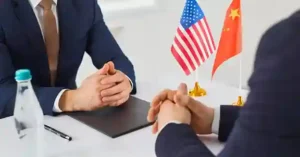
Diplomatic Collaboration
Diplomatic collaboration between China and Russia is a key component of their partnership, marked by shared objectives to challenge the US-led global order and reshape international norms. By aligning their positions on global issues and leveraging multilateral platforms, they aim to promote a multipolar world and counterbalance Western influence.
Alignment in International Institutions
China and Russia frequently align their policies and voting behavior in major international organizations, particularly the United Nations (UN):
- United Nations Security Council (UNSC): Both are permanent members of the UNSC and often veto or block resolutions proposed by Western nations. For example, they have jointly opposed interventions in Syria and sanctions on North Korea that could weaken their regional influence.
- Human Rights Council: They challenge Western narratives on human rights by emphasizing sovereignty and non-interference, often countering resolutions criticizing their domestic policies.
- World Trade Organization (WTO): They advocate for reforms to reduce perceived Western dominance and protect their interests in global trade.
Multilateral Forums and Alternatives
Beyond traditional institutions, China and Russia have spearheaded the creation and promotion of alternative multilateral platforms:
- Shanghai Cooperation Organization (SCO): Founded by China and Russia, the SCO focuses on regional security, economic cooperation, and combating terrorism in Asia, serving as a counterweight to Western alliances like NATO.
- BRICS: Through BRICS (Brazil, Russia, India, China, South Africa), they promote financial and development initiatives independent of Western institutions like the IMF and World Bank.
- Eurasian Integration: Russia’s Eurasian Economic Union (EAEU) and China’s Belt and Road Initiative (BRI) intersect, symbolizing their commitment to economic and diplomatic collaboration across Asia.
Shared Opposition to Western Policies
China and Russia collaborate diplomatically to oppose US-led initiatives and policies they perceive as threats to their sovereignty and global ambitions:
- Sanctions: Both nations criticize and resist unilateral sanctions imposed by the US, advocating for international rules that limit such measures.
- Military Alliances: They jointly condemn Western military alliances, such as NATO and AUKUS, as destabilizing forces in Europe and the Indo-Pacific.
- Democracy Promotion: China and Russia argue that Western efforts to promote democracy often lead to interference in domestic affairs and instability, emphasizing their alternative model of governance.
Regional Coordination
China and Russia work together to manage regional issues that align with their interests:
- Central Asia: Both seek to maintain stability in Central Asia while avoiding direct competition. Russia prioritizes security through the Collective Security Treaty Organization (CSTO), while China invests in economic development via the BRI.
- Middle East: They collaborate to counter Western influence, with Russia’s military presence in Syria and China’s economic investments in the region complementing each other.
- Africa and Latin America: Both nations expand their influence in Africa and Latin America through investments, diplomatic outreach, and strategic partnerships to counterbalance Western dominance.
Bilateral Diplomatic Relations
China and Russia maintain strong bilateral relations characterized by regular high-level meetings and strategic agreements:
- State Visits: Frequent meetings between leaders Xi Jinping and Vladimir Putin underscore their commitment to deepening ties. Their public declarations often emphasize shared values and opposition to Western dominance.
- Strategic Agreements: Bilateral agreements on trade, energy, and technology demonstrate their intent to integrate their economies and policies further.
Public Diplomacy and Propaganda
China and Russia collaborate in shaping global narratives through media and public diplomacy:
- State Media Cooperation: They coordinate messaging through state-controlled media outlets, portraying themselves as defenders of a fair and just international order.
- Disinformation Campaigns: Both nations engage in disinformation campaigns to undermine Western credibility and promote their narratives.
- Cultural Exchanges: Diplomatic initiatives also include cultural and academic exchanges aimed at fostering mutual understanding and countering Western soft power.
Challenges and Divergences
Despite strong diplomatic alignment, their collaboration faces challenges:
- Competing Interests: In regions like Central Asia, their strategic interests occasionally clash, requiring careful management to avoid rivalry.
- Asymmetric Influence: While Russia seeks equal partnership, China’s economic and global influence often puts it in a dominant position, causing unease in Moscow.
- Long-Term Goals: Russia’s focus on immediate geopolitical challenges contrasts with China’s long-term economic and strategic ambitions.
Strategic Implications
China and Russia’s diplomatic collaboration has profound implications for global geopolitics:
- Undermining Western Alliances: Their united front challenges the cohesion and effectiveness of Western alliances like NATO and the EU.
- Reshaping Global Norms: By promoting alternative values such as sovereignty and non-interference, they seek to redefine the principles of the international order.
- Encouraging Multipolarity: Their partnership signals a shift away from US hegemony toward a more distributed global power structure.
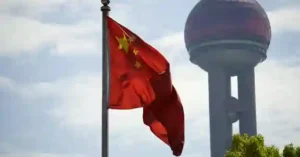
Eyes on Asia: The China-Russia-United States Triangle
The evolving relationship between China and Russia has significant implications for the United States, particularly in Asia. As the US seeks to maintain its influence in the region, the growing China-Russia partnership presents a strategic challenge, shifting the balance of power. This section explores how the dynamics between these two nations affect US interests in Asia, examining the potential threats, opportunities, and responses that shape the future of this triangular relationship.
The Strategic Significance of Asia
Asia is critical to global geopolitics, with its economic vitality, technological advancements, and military developments making it a focal point of international competition. For the US, maintaining dominance in Asia is paramount to securing its global leadership. Both China and Russia are working to reduce US influence in the region, complicating Washington’s strategy.
China’s Growing Influence
Economic Power:
China’s economic rise has transformed it into Asia’s dominant player, exerting influence through trade, investment, and infrastructure projects such as the Belt and Road Initiative (BRI). China’s economic heft has created dependencies in neighboring nations, many of which are critical to US interests.
Military Expansion:
China’s military modernization, particularly its naval expansion and strategic positioning in the South China Sea, challenges US military presence and power projection in the region.
Diplomatic Push:
China is increasingly shaping diplomatic norms in Asia through bilateral agreements and multilateral organizations like the Shanghai Cooperation Organization (SCO), aligning with Russia to counter US-led regional efforts.
Russia’s Strategic Positioning
Energy and Security Interests:
Russia’s vast energy resources, especially natural gas and oil, make it an important player in Asia’s energy security. As a key energy supplier, Russia is strategically positioned to influence countries that rely on its resources, such as China, Japan, and South Korea.
Military Cooperation:
Russia’s involvement in Asia is not limited to economic influence. Military collaborations with China, including joint exercises and defense technology sharing, directly challenge US power and its military alliances in the region.
Central Asia:
Russia views Central Asia as its sphere of influence, but China’s growing presence through the BRI complicates this. Russia must balance cooperation with China in regional security while maintaining its own geopolitical leverage in this critical area.
US Responses and Strategic Shifts
The US response to the China-Russia partnership in Asia involves a combination of competition, containment, and engagement strategies.
Increasing Military Presence
Pivot to Asia:
The US has reoriented its military and diplomatic focus toward the Indo-Pacific, with an emphasis on strengthening its alliances with countries like Japan, South Korea, Australia, and India. These alliances are designed to counter China’s growing military presence and to ensure freedom of navigation in the South China Sea.
Strengthening Regional Defense Initiatives:
The US has boosted its military presence in strategic areas such as Guam and Okinawa, while also investing in new defense initiatives like AUKUS (Australia, UK, US) and the Quad (US, Japan, India, Australia). These efforts aim to create a “security architecture” that can contain both China and Russia’s regional influence.
Nuclear Deterrence:
As both China and Russia modernize their nuclear arsenals, the US has focused on strengthening its own deterrence capabilities, including nuclear modernization and the expansion of missile defense systems in Asia.
Economic Countermeasures
Trade Relations and Sanctions:
The US continues to use trade and economic tools to exert pressure on China and Russia. This includes tariffs, sanctions, and export controls aimed at curbing their economic expansion. The US has focused on restricting China’s access to critical technologies like semiconductors, while imposing sanctions on Russia for its actions in Ukraine and elsewhere.
Building Economic Alliances:
The US is seeking to foster stronger economic ties with other Asian powers, such as India, and promote alternative regional initiatives like the Indo-Pacific Economic Framework (IPEF). These efforts are designed to counter China’s Belt and Road Initiative and reduce reliance on Chinese markets and infrastructure.
Diplomatic Engagement and Rivalry
Strategic Competition:
While the US sees China as its primary strategic competitor, Russia’s growing involvement in Asia complicates this rivalry. The US must balance engagement with both countries to prevent further alignment between them, while simultaneously managing regional challenges such as North Korea and the Taiwan Strait.
Cooperation on Global Issues:
Despite their competition in Asia, the US, China, and Russia must also cooperate on global issues like climate change, arms control, and non-proliferation. However, diplomatic tensions in Asia often hinder productive collaboration on these issues.
Implications for Regional Security
China and Russia’s United Front
The growing alignment between China and Russia poses a direct challenge to US interests in Asia, as their combined economic, military, and diplomatic influence could shift regional power dynamics. The strategic partnership allows them to exert pressure on US allies and partners, weaken American leadership, and create a more favorable environment for their own geopolitical goals.
Erosion of US Influence:
As China and Russia work to undermine US influence in key Asian countries, the US may face diminishing returns on its diplomatic and economic efforts in the region. The success of China’s Belt and Road Initiative and Russia’s regional interventions may cause countries to tilt away from US alliances, further complicating Washington’s position.
The Challenge of North Korea
Both China and Russia have an interest in preventing US military expansion on the Korean Peninsula and maintaining a stable North Korea. Their diplomatic collaboration on issues like North Korea highlights their ability to present a united front against US-led sanctions and efforts to isolate Pyongyang, adding another layer of complexity to US security concerns in Asia.
The Taiwan Strait
China’s military build-up and Russia’s support for China’s territorial ambitions in Taiwan could have far-reaching consequences for regional stability. The US’s commitment to Taiwan’s security has created a potential flashpoint, where a unified China-Russia stance could challenge US deterrence and alter the regional balance of power.
Policy Recommendations
Given the complexities and evolving dynamics of the China-Russia-US triangle, policymakers in Washington must adapt their strategies to address both the immediate and long-term challenges posed by these two powers. The following policy recommendations aim to guide US actions to effectively counterbalance the growing China-Russia alliance while safeguarding US interests in the region and globally.
Strengthen Alliances and Partnerships
To mitigate the influence of China and Russia in Asia, the US must reinforce its existing alliances and foster new partnerships. This can be achieved by:
Reaffirming Commitments to Allies:
The US should demonstrate its commitment to key allies in Asia, such as Japan, South Korea, Australia, and India, through enhanced military cooperation, economic partnerships, and diplomatic support. Reinforcing security commitments will help counter the growing threat posed by China and Russia in the region.
Expanding Multilateral Engagement:
The US should deepen its participation in regional multilateral organizations such as the Quad (US, Japan, India, Australia) and ASEAN (Association of Southeast Asian Nations). Strengthening these forums will promote shared interests in a free and open Indo-Pacific, counter China’s expansionist activities, and offer alternatives to Russian influence in the region.
Building Stronger Economic Ties:
The US should prioritize trade agreements and economic partnerships with regional powers. This includes initiatives like the Indo-Pacific Economic Framework (IPEF), designed to offer a counterbalance to China’s Belt and Road Initiative and foster regional economic integration without relying on Chinese markets.
Counter China and Russia’s Strategic Alignment
While China and Russia share certain goals, the US must exploit the differences in their relationship and create opportunities to weaken their alignment. Key measures include:
Engage in Diplomatic Outreach to Russia:
While Russia and China have a strong partnership, their interests are not always perfectly aligned. The US should explore diplomatic avenues to appeal to Russia’s security concerns and its desire to counterbalance China’s rising power. Engaging in arms control agreements, such as extending the New START treaty, and addressing Russia’s economic vulnerabilities could create divisions in their relationship.
Foster Divides Between China and Russia:
The US should identify and exploit areas where the China-Russia partnership faces limitations, such as in Central Asia, energy trade, and technological competition. Diplomatic efforts aimed at encouraging Russia to assert its interests more independently from China could weaken the strategic coherence of their alliance.
Increase US Influence in Central Asia:
The US should strengthen its presence and partnerships in Central Asia, a region of growing competition between China and Russia. By supporting economic development, promoting democracy, and enhancing security cooperation with Central Asian nations, the US can create alternative partnerships to counterbalance China’s Belt and Road Initiative and Russia’s regional influence.
Maintain a Robust Military Presence
The US must continue to invest in its military capabilities in Asia to ensure it remains a dominant power in the region. This includes:
Enhancing Deterrence:
Strengthening the US military presence in key strategic areas such as the South China Sea, Taiwan Strait, and the Korean Peninsula is crucial. The US should continue to deploy advanced missile defense systems and modernize its nuclear deterrent to deter China and Russia from testing US resolve in the region.
Expand Joint Military Exercises:
The US should conduct more joint military exercises with its allies in Asia to demonstrate commitment to regional stability. Exercises that focus on countering Chinese and Russian tactics, such as anti-access/area denial (A2/AD) strategies, should be prioritized to ensure interoperability with regional forces and to counter the growing military collaboration between China and Russia.
Cybersecurity and Space Defense:
The US must invest in enhancing its capabilities in emerging domains, such as cybersecurity and space. China and Russia are increasingly cooperating in these areas, and the US should focus on strengthening its defense infrastructure to protect critical assets from cyberattacks and ensure the security of space-based systems.
Promote Global Norms and Institutions
The US should continue to promote and strengthen international norms and institutions that safeguard peace, security, and democratic values. This includes:
Championing a Rules-Based Order:
The US must advocate for a rules-based international order, emphasizing the importance of international law, human rights, and respect for sovereignty. China and Russia frequently challenge these principles, and the US should lead efforts to uphold them in forums like the United Nations, the World Trade Organization, and the G7.
Reforming Global Institutions:
To address the challenges posed by China and Russia, the US should work with its allies to reform global institutions, ensuring that they better reflect the shifting geopolitical landscape. This includes reforming the United Nations Security Council to better address the growing influence of China and Russia.
Counter Disinformation Campaigns:
China and Russia have increasingly used disinformation and propaganda to advance their agendas globally. The US must strengthen its efforts to combat disinformation campaigns by increasing support for independent media, enhancing transparency in social media platforms, and working with international partners to monitor and expose foreign interference.
Leverage Economic Tools and Sanctions
The US should use its economic power to counter China and Russia’s global ambitions by implementing targeted sanctions and promoting alternatives to Chinese and Russian economic influence:
Strategic Sanctions:
The US should maintain and expand sanctions against Russia for actions that undermine international security, such as its invasion of Ukraine and its involvement in cyberattacks. Similarly, economic measures aimed at limiting China’s access to critical technologies, such as semiconductors, should be reinforced to slow its technological progress and military expansion.
Encourage Decoupling from Chinese Supply Chains:
The US should work with its allies to reduce reliance on Chinese supply chains, especially in critical sectors like technology, pharmaceuticals, and rare earth minerals. Encouraging diversification of supply chains will help reduce China’s economic leverage over the global economy.
Alternative Infrastructure Projects:
To counter China’s Belt and Road Initiative, the US should promote infrastructure projects that offer alternatives to developing nations. This includes supporting initiatives that prioritize sustainable development, transparency, and governance, thus offering a clear contrast to China’s model of infrastructure financing.
Invest in Technological Superiority
Given the increasing role of technology in global power dynamics, the US must invest heavily in emerging technologies to maintain its competitive edge over both China and Russia. This includes:
Advancing Artificial Intelligence (AI):
The US should invest in AI and other cutting-edge technologies to maintain dominance in critical sectors such as defense, cybersecurity, and space exploration. Collaborating with allies to develop ethical standards for AI will also help counter China and Russia’s use of these technologies for military and surveillance purposes.
Developing Quantum Technologies:
Quantum computing is expected to revolutionize sectors ranging from cryptography to medicine. The US should lead in this field to secure its technological and economic future, preventing China and Russia from gaining a strategic advantage.
Space Exploration and Defense:
The US should continue to invest in space-based defense systems and satellite technology, where both China and Russia are making significant strides. Ensuring the protection of space assets will be essential in maintaining technological superiority and national security.
Engage in Direct Dialogue with China and Russia
While competition is inevitable, direct engagement with both China and Russia remains necessary to avoid misunderstandings and escalation. The US should:
Maintain Diplomatic Channels:
Regular diplomatic dialogue with China and Russia is crucial to managing tensions and preventing conflict. While addressing differences, the US should seek areas of potential cooperation, particularly on global challenges such as climate change, nuclear non-proliferation, and counterterrorism.
Avoid Over-Militarization:
Over-reliance on military options risks escalating tensions with China and Russia. Diplomatic and economic approaches should remain at the forefront of US strategy to ensure long-term stability.
The Fantasy of Wedge-Driving: Why It Won’t Work
In recent years, many analysts and policymakers in the West have speculated about the possibility of driving a wedge between China and Russia, believing that the two powers have significant differences that could be exploited to weaken their growing alliance. However, this notion of “wedge-driving” is often overly optimistic and fails to account for the deeper, structural factors that bind China and Russia together. This section examines why attempts to create division between China and Russia are unlikely to succeed and why their partnership is likely to persist.
Shared Strategic Interests: A Strong Foundation for Partnership
At the heart of the China-Russia relationship is a shared vision for a world order that diminishes US and Western influence. Both countries are united by several key strategic interests that make their partnership more durable than many realize:
Opposition to Western Hegemony:
Both China and Russia view the United States and its allies as the primary threats to their national security and geopolitical ambitions. Russia, facing NATO’s expansion and sanctions following its actions in Ukraine, and China, resisting US-led encirclement in the Asia-Pacific, have found common ground in challenging the US-dominated international system.
Desire for a Multipolar World:
Both China and Russia are committed to creating a multipolar world order in which power is distributed more evenly across countries and regions, reducing the dominance of Western institutions. This shared objective is a central pillar of their collaboration, providing a foundation for their diplomatic and military ties.
Resisting Unilateral Sanctions:
The use of economic sanctions by the US and Europe has been a key issue for both China and Russia. Both nations face significant sanctions from the West—Russia due to its actions in Ukraine and China over trade imbalances, human rights abuses, and security concerns. The need to counterbalance Western economic pressure has led to closer economic and diplomatic ties between the two nations, reducing the likelihood of any significant rift.
Political and Economic Complementarity
While there are some differences in the political systems and economic models of China and Russia, these differences do not pose as great a challenge to their cooperation as many believe. Instead, the two countries complement each other in ways that strengthen their alliance:
China’s Economic Power and Russia’s Energy Resources:
China, as the world’s second-largest economy, is a major consumer of energy, and Russia, with its vast reserves of oil and natural gas, is an essential supplier. This economic interdependence has created a mutually beneficial relationship that provides both countries with economic leverage on the global stage.
Technological and Military Collaboration:
China and Russia have increasingly collaborated in defense technology, with Russia supplying advanced military hardware to China. Both countries also engage in joint military exercises, sending a message of solidarity and strength to the West. Additionally, both countries are modernizing their nuclear arsenals and enhancing their space capabilities, further cementing their strategic alignment.
Trade and Infrastructure Investments:
Russia’s economic relationship with China, especially in terms of trade and infrastructure, has flourished. Projects like the Power of Siberia gas pipeline and the Belt and Road Initiative (BRI) link Russia’s energy resources to China’s growing demand. These mutually beneficial economic ties ensure that their collaboration will continue to be a dominant factor in their relationship.
Historical Context: A Longstanding Partnership
The China-Russia relationship is not a recent development, but rather the result of decades of evolving cooperation. While the two countries have had periods of tension, particularly during the Cold War, they have increasingly found common ground in recent years. Some key historical moments that have solidified their partnership include:
Sino-Soviet Split and Reconciliation:
The Sino-Soviet split in the 1960s marked a period of severe tension between the two countries, driven by ideological differences and competing geopolitical ambitions. However, since the late 1980s and especially after the dissolution of the Soviet Union, both countries have made efforts to reconcile, focusing on shared economic and security interests rather than ideological competition.
The 2001 Sino-Russian Treaty of Friendship:
The signing of the Treaty of Good-Neighborliness and Friendly Cooperation between China and Russia in 2001 formalized their partnership, highlighting shared goals in areas such as trade, energy, and security. The treaty was a major step in cementing their bilateral ties and fostering deeper political and economic cooperation.
The Ukraine Crisis and Growing Solidarity:
The Ukraine crisis, which began in 2014, provided an opportunity for China and Russia to deepen their strategic relationship. Russia’s annexation of Crimea and subsequent sanctions from the West led to increased cooperation with China, who provided diplomatic support and economic assistance. China also offered a counterbalance to Western pressures, further strengthening the bond between the two countries.
Geopolitical Realities: The Cost of Alienation
One of the primary challenges of wedge-driving is that the geopolitical realities of both China and Russia make it difficult for them to diverge from their current partnership. Several factors make it unlikely that either country will abandon the other:
China’s Need for Russian Support in Central Asia:
Russia’s dominance in Central Asia has long been a cornerstone of its regional influence. However, China’s Belt and Road Initiative (BRI) has introduced new economic dynamics in the region. Despite this, China still relies on Russia’s security expertise to manage its investments in Central Asia and counter potential threats from radical movements and Islamic extremism. The cooperation between the two countries in this region ensures that their partnership remains strategically vital.
Russia’s Vulnerability to Western Pressure:
Russia, especially after its actions in Ukraine, is highly sensitive to Western efforts to isolate it diplomatically and economically. Its relationship with China provides a buffer against this pressure, with China offering Russia economic support and diplomatic cover. Any attempt by the US or Europe to drive a wedge between the two would undermine Russia’s ability to counterbalance Western sanctions.
The Global Power Shift:
Both China and Russia are keenly aware that the US-led world order is in decline and that their combined efforts can accelerate this shift. For China, strengthening its ties with Russia is essential to ensuring its own rise as a global power. For Russia, aligning with China is crucial to maintaining its relevance in an increasingly multipolar world. These shared goals make it difficult for either country to pursue policies that would weaken their strategic alliance.
The Fantasy of Wedge-Driving: Misunderstanding the China-Russia Relationship
The belief that China and Russia will inevitably split due to their differences—whether ideological, economic, or strategic—is largely a Western misconception. While the two countries do have differences, these are outweighed by the broader, more compelling reasons for their continued cooperation:
Ideological Differences:
While China is a communist state and Russia is a more authoritarian, nationalist regime, their differences are not insurmountable. Both countries are pragmatic in their foreign policies, prioritizing national sovereignty and stability over ideological purity. Furthermore, both are willing to cooperate to challenge what they perceive as Western dominance.
Economic Competition:
China’s growing economic power does not pose a significant threat to Russia’s interests, as Russia’s primary economic relationship with China is complementary rather than competitive. China’s need for Russian energy resources and Russia’s reliance on Chinese markets have ensured a stable economic relationship that is unlikely to be undermined by competitive forces.
Geopolitical Realities:
The US and Europe’s efforts to isolate and counterbalance both China and Russia have inadvertently strengthened the partnership between the two nations. Their shared experience of Western pressure has created a bond that transcends individual national interests and ensures continued cooperation.
Conclusion
The evolving relationship between China, Russia, and the United States is one of the most significant geopolitical dynamics of the 21st century. While the US faces mounting challenges from a growing China-Russia alliance, attempts to drive a wedge between the two are unlikely to succeed due to their shared strategic interests, economic interdependence, and historical cooperation. Instead, the US must adopt a multifaceted approach that strengthens alliances, promotes global norms, and enhances military and economic capabilities to effectively address the growing influence of China and Russia. In the face of this evolving power shift, the US must navigate these complex relationships carefully, balancing competition with diplomacy to ensure that it remains a dominant force in shaping the future global order.
[WPSM_AC id=587]

Really these 3 countries are super power if china and russia are together than they become a super power and they reduce the american influence
What’s you thinks about it ..
Займы без отказа и проверок: получите деньги прямо сейчас
онлайн займ без отказа [url=https://dengikz.online/]онлайн займ без отказа[/url] .
Двигатели Cummins M11: заказать с доставкой по всей России
мотор каминс 11 [url=dvigatel-cummins-m-11.ru]dvigatel-cummins-m-11.ru[/url] .
Design Your Own Custom Stamps Online: Quick and Easy
create stamp online free [url=https://stamp-maker-online.ru/]create stamp online free[/url] .
Экран для проектора на штативе: мобильное решение для бизнеса и дома
проекционные экраны [url=https://ehkrany-dlya-proektorov-1.ru]https://ehkrany-dlya-proektorov-1.ru[/url] .
Pingback: Russia Iran Relations: Does Russia Support Iran - EchOoPlus